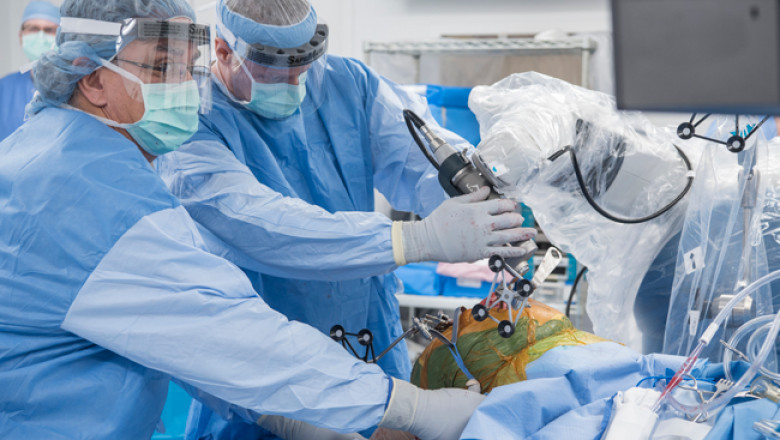views

Robotic Knee Replacement Surgery—Transforming Lives

Back in the day, surgeries consequently led to blood loss and even bone damage. Patients went through difficult moments and endured awful pain, discomfort, and excessive bleeding before the revolution of Robotic Joint Replacement Surgery. There was no other choice than to submit to the traditional procedure of knee replacement. Thanks to innovative treatment options, the different ways to treat arthritis improve and offer long-term relief. So, what exactly is Robotic Joint Replacement Surgery? Let’s find out.
Robotic Joint Replacement Surgery
Robotic knee replacement surgery involves removing damaged tissue in the knee and replacing it with an artificial joint with the help of a robotic arm. The procedure may be able to provide not just relief but quicker recovery times and longer-lasting results.
While robotic knee replacement surgery sounds like a distant dream or something from the future, it has been around for some time now. Given that the knee operations require extreme precision, high-end technology such as robotic arms facilitate precision motions during the procedure.
But yes, patients may be on the fence about the operation due to the ambiguity surrounding them. They are concerned about their safety and the risks associated with this procedure. The reality, however, is quite the contrary, offering a slew of advantages.
Here are seven robotic knee replacement surgery benefits to clear the air and why you want it over traditional knee replacement surgery.
Robotic Knee Surgery Benefits
Improved Surgical Planning
Robotic Knee Replacement involves specialized 3-D imaging, which helps determine the best type and location for your replacement joint. It ensures the most accurate sizing and fitment, leading to better surgery results.
Safer and Enhanced Outcome
According to studies, robotic knee surgery patients experience improved bone alignment and a lesser rehabilitation period. Robotic arms can also better remove surgical areas of unhealthy bone tissue, allowing patients to heal and recuperate faster.
Long-Term Cost Savings
A robotic knee replacement procedure is a minimally invasive surgery that reduces the risk of infections and other complications. Patients who undergo robotic knee replacement surgery experience fewer problems, resulting in fewer hospital visits. The faster healing process also means returning to normal activities quicker—going to work, earning income, etc.
Experience Gratification
Robotic knee replacement allows patients to get back to their normal routines as early as possible, resulting in improved patient contentment. Robotic knee surgery does not invade a patient’s life for too long, involving minimal medical interruption or downtime. Further, the dexterity of utilizing the futuristic arm is also appealing to patients. The systematic approach leaves less to zero room for errors. The implant is also more precisely positioned. The goal of any surgery is to find the best practical solution, and robotic knee replacement surgery delivers just that.
Knee Replacement: Traditional vs. Robotic Surgery
A robot does not do robotic-assisted knee replacement surgery by itself. Instead, it serves as a guide, assisting your doctor in sticking to the pre-determined plan. The orthopedic surgeon is in charge, just as they are during traditional surgery, but they employ the robot as an additional surgical instrument. The robotic arm assists the surgeon throughout the surgery, delivering the finest possible results. Robotic joint replacement makes smaller incisions and assists in achieving ideal alignment while allowing a speedier healing process.












